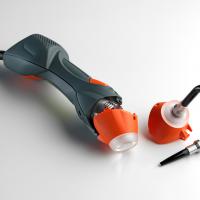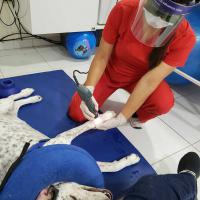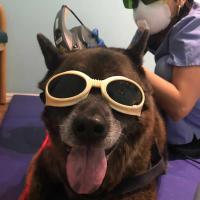Cleaning, maintenance and product care factors have always been a diktat for ASA which dedicates an entire chapter to this when supplying the materials.
“Now more than ever, the sanitation and cleaning of the devices are the basis from which to begin to reassure the owners about compliance with safety before-during-after the treatment. There are just a few rules - explain Silvio Ferracin and Diego Tono, ASAveterinary Area Managers for Italy - which go hand in hand with the adoption of appropriate clothing by the veterinarian and with the sanitation of the premises where the session takes place".
The first step is the regular cleaning of the device and of the connected applicators by using a soft cloth moistened with non-flammable and alcohol-free detergent - where Benzalkonium chloride and ESO S80 (a compound of benzalkonium chloride and chlorhexidine digluconate) are particularly recommended, isopropyl alcohol is instead potentially harmful when used on plastic components but not on optical ones, editor's note - and then a final drying with a clean cloth.
Interchangeable light guides
For a deep hygiene of the machines and their ready use, ASAveterinary also offers a series of ad hoc accessories such as, for example, the interchangeable light guides for Mphi Vet Orange with accurate indications for their maintenance: immersion of the light guide in a solution of soap and water; use, if necessary, of a brush or soft cloth to remove any contamination; rinsing of all components with hot running water; visual inspection of any residues; drying with a clean cloth.
"As is also indicated in the user manual – the ASA Service Department reminds us - the light guides must be sterilised at first use and after each use in a steam autoclave with standard sterilisation programs at 134° -138°C, with a pressure of 2.1 bar, for 3.5-5 minutes".
Finally, clothing and Personal Protective Equipment deserve a separate mention: thanks to the lack of evidence linking the propagation of Covid-19 to pets, unlike professionals in the human sector, vets seem to have fewer constraints.
Where social distancing and the use of a mask in the presence of collaborators and animal owners have now been taken on board, when treating the patient they are obliged to wear laser protection glasses together with special PPE in order to make the session as safe as possible.







